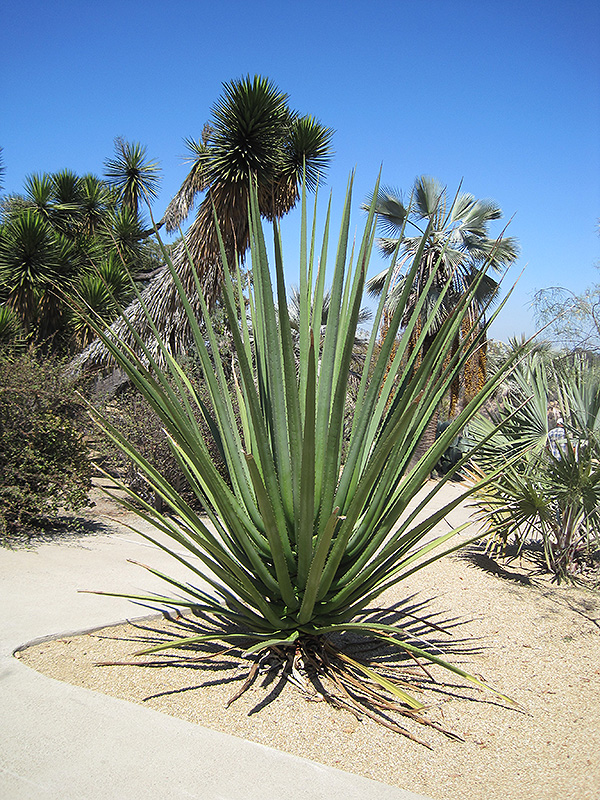MacDougal’s Century Plant
Description
This variety slowly develops a trunk, producing a showy rosette of extremely long, swordlike green leaves with toothed margins; flower spike soars upward, only after 25 to 40 years growth; basal plant dies after blooming; a great accent planting
Landscape Attributes
MacDougal's Century Plant is an herbaceous evergreen perennial with an upright spreading habit of growth. Its wonderfully bold, coarse texture can be very effective in a balanced garden composition.
MacDougal's Century Plant is recommended for the following landscape applications;
Planting & Growing
MacDougal's Century Plant will grow to be about 10 feet tall at maturity extending to 15 feet tall with the flowers, with a spread of 10 feet. It has a low canopy with a typical clearance of 3 feet from the ground. It grows at a slow rate, and under ideal conditions can be expected to live for 40 years or more. As an evegreen perennial, this plant will typically keep its form and foliage year-round.
This plant does best in full sun to partial shade. It prefers dry to average moisture levels with very well-drained soil, and will often die in standing water. It is considered to be drought-tolerant, and thus makes an ideal choice for a low-water garden or xeriscape application. It is not particular as to soil pH, but grows best in poor soils. It is highly tolerant of urban pollution and will even thrive in inner city environments. This species is not originally from North America. It can be propagated by multiplication of the underground bulbs.
MacDougal's Century Plant is a fine choice for the garden, but it is also a good selection for planting in outdoor pots and containers. Its large size and upright habit of growth lend it for use as a solitary accent, or in a composition surrounded by smaller plants around the base and those that spill over the edges. It is even sizeable enough that it can be grown alone in a suitable container. Note that when growing plants in outdoor containers and baskets, they may require more frequent waterings than they would in the yard or garden. Be aware that in our climate, this plant may be too tender to survive the winter if left outdoors in a container. Contact our experts for more information on how to protect it over the winter months.

